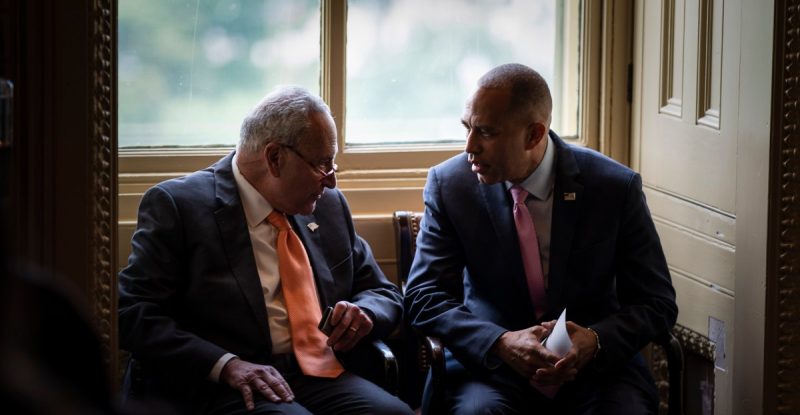
President Trump’s global trade war, marked by escalating tariffs, has sent shockwaves through the US economy, plummeting stocks and driving up prices. His approval ratings are tanking, yet the Democratic response is strangely fractured, revealing internal disagreements over the party’s stance on trade.
Last week, as global markets reeled from the fallout, House Democrats surprisingly defended aspects of Trump’s trade policies. Representative Chris Deluzio argued that decades of unchecked “free trade” had led to a “race to the bottom,” hollowing out American industry and costing jobs. However, he also criticized Trump’s chaotic and inconsistent approach, advocating for carefully targeted tariffs coupled with pro-union policies and government subsidies.
This nuanced position sparked immediate backlash from many liberals. They viewed Trump’s tariffs as a massive middle-class tax hike, driving up consumer prices, decimating retirement savings, and increasing the risk of a recession. They saw no merit in acknowledging any positive aspects of Trump’s trade ideology, particularly given his inconsistent and ultimately damaging approach.
Some progressives, however, appreciated Deluzio’s more measured approach. They believed acknowledging the flaws of free trade – and the need to support domestic manufacturing – was crucial for winning over working-class voters.
This debate highlights two key questions: Is Deluzio’s analysis correct? And is his message politically effective for Democrats nationally? The answer to both, it seems, is largely no.
Deluzio’s argument rests on three claims: free trade agreements hollowed out American industry, it harmed American workers, and tariffs are a useful tool for economic justice. These claims, while partially true in specific contexts, are largely inaccurate when viewed holistically. While foreign competition and offshoring have undeniably impacted US manufacturing, the primary causes of declining manufacturing employment are economic development (a shift towards service-sector jobs) and automation. Despite job losses, US manufacturing output remains remarkably high, and the US remains a global manufacturing powerhouse.
The claim that free trade harmed American workers is also misleading. While some communities suffered, overall evidence suggests globalization benefited American workers through increased real wages due to access to cheaper goods. The median US worker’s real personal income has significantly increased since the normalization of trade relations with China and the implementation of NAFTA.
The idea that tariffs promote economic justice is also questionable. While there are isolated instances where the threat of tariffs has led to improved labor standards (as seen with the renegotiated NAFTA), generally, tariffs hurt workers in developing countries by condemning them to poverty. The progressive goal should be to raise labor standards globally, not to erect trade barriers that primarily harm the poor while raising prices for American consumers.
Even if Deluzio’s argument is flawed, is it politically advantageous? While some voters express sympathy for protecting US industry, public opinion on trade is not strongly held. However, Trump’s tariffs have changed this, leading to a significant shift in public opinion against tariffs. As the economic pain caused by these tariffs becomes more apparent, public support is expected to erode further.
In conclusion, while a more nuanced approach might be suitable for specific districts, a national Democratic strategy should focus on the undeniable economic harm caused by Trump’s tariffs – increased prices and a heightened risk of recession – rather than engaging in debates about the intricacies of free trade. The economic reality of rising prices and shrinking savings will likely speak louder than any carefully crafted political message.










